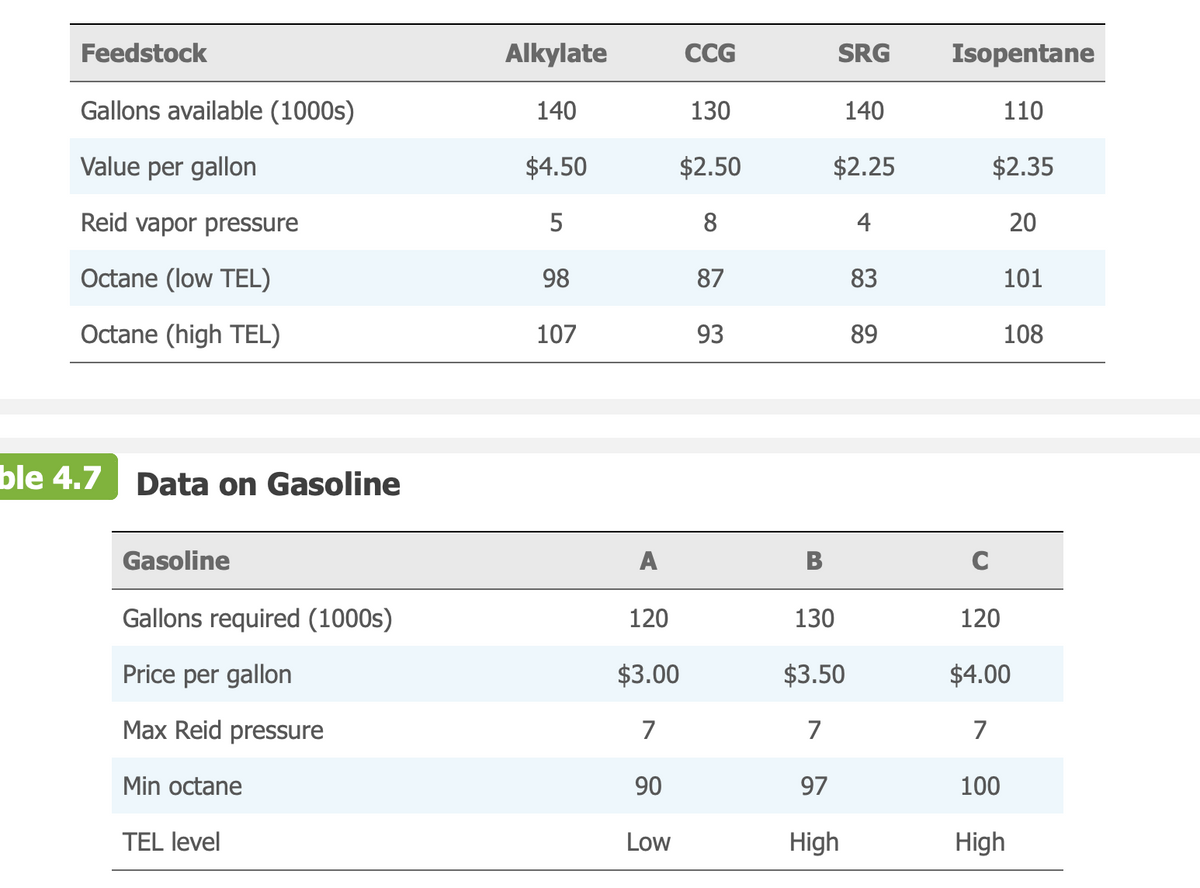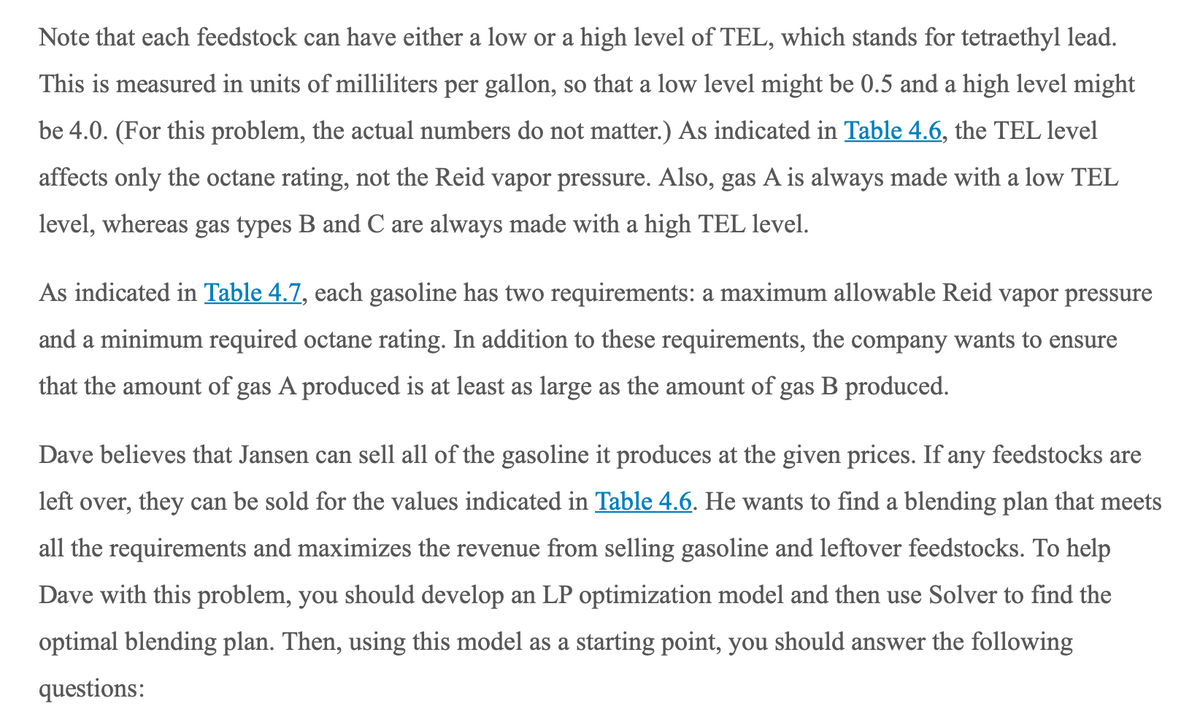Suppose that because of air pollution concerns, Jansen might have to lower the Reid vapor pressure maximum on each gas type (by the same amount). Use SolverTable to explore how such a change would affect Jansen’s optimal revenue
Suppose that because of air pollution concerns, Jansen might have to lower the Reid vapor pressure maximum on each gas type (by the same amount). Use SolverTable to explore how such a change would affect Jansen’s optimal revenue
Practical Management Science
6th Edition
ISBN:9781337406659
Author:WINSTON, Wayne L.
Publisher:WINSTON, Wayne L.
Chapter10: Introduction To Simulation Modeling
Section: Chapter Questions
Problem 56P: When you use a RISKSIMTABLE function for a decision variable, such as the order quantity in the...
Related questions
Question
- Suppose that because of air pollution concerns, Jansen might have to lower the Reid vapor pressure maximum on each gas type (by the same amount). Use SolverTable to explore how such a change would affect Jansen’s optimal revenue

Transcribed Image Text:Feedstock
Alkylate
CCG
SRG
Isopentane
Gallons available (1000s)
140
130
140
110
Value per gallon
$4.50
$2.50
$2.25
$2.35
Reid vapor pressure
5
8
4
20
Octane (low TEL)
98
87
83
101
Octane (high TEL)
107
93
89
108
ble 4.7
Data on Gasoline
Gasoline
A
B
C
Gallons required (1000s)
120
130
120
Price per gallon
$3.00
$3.50
$4.00
Max Reid pressure
7
7
7
Min octane
90
97
100
TEL level
Low
High
High

Transcribed Image Text:Note that each feedstock can have either a low or a high level of TEL, which stands for tetraethyl lead.
This is measured in units of milliliters per gallon, so that a low level might be 0.5 and a high level might
be 4.0. (For this problem, the actual numbers do not matter.) As indicated in Table 4.6, the TEL level
affects only the octane rating, not the Reid vapor pressure. Also, gas A is always made with a low TEL
level, whereas gas types B and C are always made with a high TEL level.
As indicated in Table 4.7, each gasoline has two requirements: a maximum allowable Reid vapor pressure
and a minimum required octane rating. In addition to these requirements, the company wants to ensure
that the amount of gas A produced is at least as large as the amount of gas B produced.
Dave believes that Jansen can sell all of the gasoline it produces at the given prices. If any feedstocks are
left over, they can be sold for the values indicated in Table 4.6. He wants to find a blending plan that meets
all the requirements and maximizes the revenue from selling gasoline and leftover feedstocks. To help
Dave with this problem, you should develop an LP optimization model and then use Solver to find the
optimal blending plan. Then, using this model as a starting point, you should answer the following
questions:
Expert Solution
This question has been solved!
Explore an expertly crafted, step-by-step solution for a thorough understanding of key concepts.
This is a popular solution!
Trending now
This is a popular solution!
Step by step
Solved in 3 steps

Knowledge Booster
Learn more about
Need a deep-dive on the concept behind this application? Look no further. Learn more about this topic, operations-management and related others by exploring similar questions and additional content below.Recommended textbooks for you

Practical Management Science
Operations Management
ISBN:
9781337406659
Author:
WINSTON, Wayne L.
Publisher:
Cengage,

Practical Management Science
Operations Management
ISBN:
9781337406659
Author:
WINSTON, Wayne L.
Publisher:
Cengage,